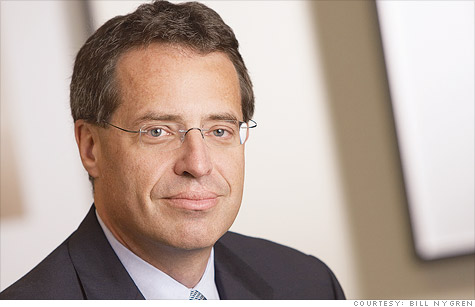Search News

Bill Nygren, Oakmark co-manager.
(Money Magazine) -- When Bill Nygren talks about value (the art of finding stocks trading for less than the business is worth), take notes: Under Nygren, the Oakmark and Oakmark Select funds have trounced the S&P 500. He sees plenty of opportunities now, with some big stocks offering dividend yields higher than bonds do. Many of Nygren's picks also have extra capital to buy back stock and boost per-share earnings. Nygren spoke with contributor Laura Lallos.
You've always leaned toward value stocks. But lately that has included some classic growth names.
Merck (MRK, Fortune 500), for example, is at the same price as it was in 1996, when it earned half of what we expect this year. Its price-to-earnings ratio is much lower than the market's. Back in 1996, high-quality drug stocks paid little income; today, Merck yields more than twice what you get from five-year government bonds. They also spend a lot on R&D; one of the most effective ways to reduce health care costs is to find a pill to substitute for other treatments.
Merck will soon lose its patent on asthma drug Singulair. Does it have new drugs to offset the loss?
"Offset" is probably the right word. We don't expect strong sales growth out of Merck. But they recently announced a $5 billion share repurchase, nearly 5% of their stock. Even if there is no improvement in sales or income, earnings per share could grow at least 5%, on top of a dividend yield of about 4%.
How does a popular stock like Apple (AAPL, Fortune 500) end up in a fund like yours?
We made our first purchase of Apple in a very weak market -- early 2009 -- at about $80 a share. That was before we knew about iPads! Today the stock is just under $350 but should have $100 a share on the balance sheet by the end of next year. So it is still selling at a lower P/E ratio than the average company if you subtract the cash from the share price. To not like Apple's stock today, you have to believe it has worse-than-average prospects for growth.
Do you have any typical value plays -- you know, unloved stocks in slow-growth businesses?
The insurer Allstate (ALL, Fortune 500) is a great example. The market doesn't care for it because growth in sales has not been impressive. Revenue is where it was back in 2000. But back then, Allstate had more shares outstanding. Because of stock repurchases, sales per share are up 70% over the decade. We see that continuing.
Haven't recent natural disasters, like the big tornadoes, hurt them?
It could cost them a quarter or two of earnings. In our opinion, however, it won't diminish Allstate's capital level or their prospects in a normal year. ![]()

Carlos Rodriguez is trying to rid himself of $15,000 in credit card debt, while paying his mortgage and saving for his son's college education.
| Overnight Avg Rate | Latest | Change | Last Week |
|---|---|---|---|
| 30 yr fixed | 3.80% | 3.88% | |
| 15 yr fixed | 3.20% | 3.23% | |
| 5/1 ARM | 3.84% | 3.88% | |
| 30 yr refi | 3.82% | 3.93% | |
| 15 yr refi | 3.20% | 3.23% |
Today's featured rates: